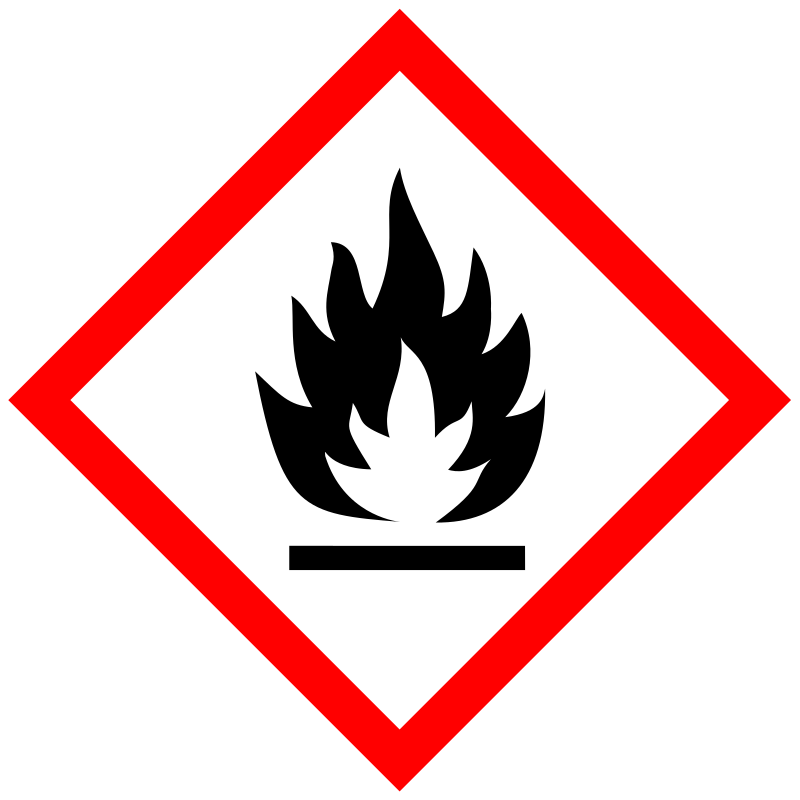D0742 | 4-nitrosophenol
| Toxicity | Dose | Time | Species | Model | Method | Action | Positive criterion | Reference |
|---|---|---|---|---|---|---|---|---|
| MEMBRANE POTENTIAL | 4.71±2.31 | human | qHTS-HepG2 | MMP assay | decrease | IC50 | 163 | |
| MEMBRANE POTENTIAL | 15.85 | human | HepG2 | MMP assay | decrease | IC50 | 163 | |
| MEMBRANE POTENTIAL | rat | hepatocytes | MMP assay | Negative | IC50 | 163 | ||
| Pictogram | Signal | Statements | Precautionary Statement Codes |
|---|---|---|---|
    |
Danger |
H302: Harmful if swallowed [Warning Acute toxicity, oral] H318: Causes serious eye damage [Danger Serious eye damage/eye irritation] H341: Suspected of causing genetic defects [Warning Germ cell mutagenicity] H411: Toxic to aquatic life with long lasting effects [Hazardous to the aquatic environment, long-term hazard] |
P201, P202, P264, P270, P273, P280, P281, P301+P312, P305+P351+P338, P308+P313, P310, P330, P391, P405, and P501; (The corresponding statement to each P-code can be found at the GHS Classification page.) |
      |
Danger |
Aggregated GHS information provided by 75 companies from 7 notifications to the ECHA C&L Inventory. Each notification may be associated with multiple companies. H242 (50.67%): Heating may cause a fire [Danger Self-reactive substances and mixtures Organic peroxides] H301 (26.67%): Toxic if swallowed [Danger Acute toxicity, oral] H302 (73.33%): Harmful if swallowed [Warning Acute toxicity, oral] H318 (100%): Causes serious eye damage [Danger Serious eye damage/eye irritation] H341 (100%): Suspected of causing genetic defects [Warning Germ cell mutagenicity] H411 (73.33%): Toxic to aquatic life with long lasting effects [Hazardous to the aquatic environment, long-term hazard] H413 (26.67%): May cause long lasting harmful effects to aquatic life [Hazardous to the aquatic environment, long-term hazard] Information may vary between notifications depending on impurities, additives, and other factors. The percentage value in parenthesis indicates the notified classification ratio from companies that provide hazard codes. Only hazard codes with percentage values above 10% are shown. |
P201, P202, P210, P220, P234, P264, P270, P273, P280, P281, P301+P310, P301+P312, P305+P351+P338, P308+P313, P310, P321, P330, P370+P378, P391, P403+P235, P405, P411, P420, and P501; (The corresponding statement to each P-code can be found at the GHS Classification page.) |
    |
Danger |
H302: Harmful if swallowed [Warning Acute toxicity, oral] H318: Causes serious eye damage [Danger Serious eye damage/eye irritation] H341: Suspected of causing genetic defects [Warning Germ cell mutagenicity] H411: Toxic to aquatic life with long lasting effects [Hazardous to the aquatic environment, long-term hazard] |
P201, P202, P264, P270, P273, P280, P281, P301+P312, P305+P351+P338, P308+P313, P310, P330, P391, P405, and P501; (The corresponding statement to each P-code can be found at the GHS Classification page.) |
| 1,4-Benzoquinone 4-oxime | 1,4-Benzoquinone monoxime | 1,4-benzoquinone mono-oxime |
| 104-91-6 | 2, 4-hydroxyimino- | 2,4-dione, monooxime |
| 2,5-Cyclohexadien-1-one, 4-hydroxyimino- | 2,5-Cyclohexadiene-1,4-dione, monooxime | 2,5-Cyclohexadiene-1,4-dione, monooxime (9CI) |
| 4-(hydroxyimino)cyclohexa-2,5-dien-1-one | 4-07-00-02073 (Beilstein Handbook Reference) | 4-Benzoquinone Monoxime |
| 4-Hydroxyimino-2,5-cyclohexadiene-1-one | 4-NITROSOPHENOL | 4-Nitroso-phenol |
| 4-Nitrosofenol | 4-Nitrosofenol [Czech] | 4-Nitrosophenol (wetted with ca. 40% Water) (unit weight on dry weight basis); |
| 4-Nitrosophenol(wettedwithca.40%Water)(unitweightondryweightbasis) | 4-hydroxyimino-cyclohexa-2,5-dien-1-one | 55EB58H2UP |
| 637-62-7 | A801099 | ACMC-1BVF6 |
| AI3-19026 | AKOS006230373 | AKOS006311740 |
| AM86242 | BRN 1856695 | BRN 2040595 |
| CAS-104-91-6 | CCRIS 4710 | CHEMBL104353 |
| CHEMBL3276923 | CTK0H8028 | DSSTox_CID_5991 |
| DSSTox_GSID_25991 | DSSTox_RID_77981 | DTXSID0025991 |
| DTXSID0075287 | EINECS 203-251-6 | FCH917241 |
| FT-0631578 | FT-0662579 | HSDB 5362 |
| InChI=1/C6H5NO2/c8-6-3-1-5(7-9)2-4-6/h1-4,8H | JSTCPNFNKICNNO-UHFFFAOYSA- | JSTCPNFNKICNNO-UHFFFAOYSA-N |
| KS-0000175K | LS-383 | LS-56330 |
| N0374 | NCGC00249111-01 | NCGC00257216-01 |
| NCGC00259303-01 | NSC 239647 | NSC 3124 |
| NSC-239647 | NSC-3124 | NSC239647 |
| NSC3124 | Nitrosophenol | Phenol, 4-nitroso- |
| Phenol, p-nitroso- | Q27261304 | Quinone 4-oxime |
| Quinone monooxime | Quinone monoxime | Quinone oxime |
| R326 | SC-17657 | SCHEMBL107699 |
| SCHEMBL232995 | STL453714 | TC-168616 |
| Tox21_201754 | Tox21_303059 | UNII-55EB58H2UP |
| VZ35554 | W-108801 | WLN: L6V DYJ DUNQ |
| WLN: QR DNO | ZINC1669666 | ZINC96337078 |
| ZX-AT008557 | benzoquinone monooxime | benzoquinone oxime |
| mono-nitroso phenol | p-Benzoquinone 4-oxime | p-Benzoquinone monoxime |
| p-Benzoquinone, monooxime | p-Benzoquinone, monooxime (8CI) | p-Chinonmonoxim |
| p-Chinonmonoxim [Czech] | p-Nitrosophenol | p-Quinone monooxime |
| p-Quinone monoxime | para-Nitrosophenol |
| CAS Number | 104-91-6, 637-62-7, 87029-84-3 |
| PubChem Compound | 7729 |

